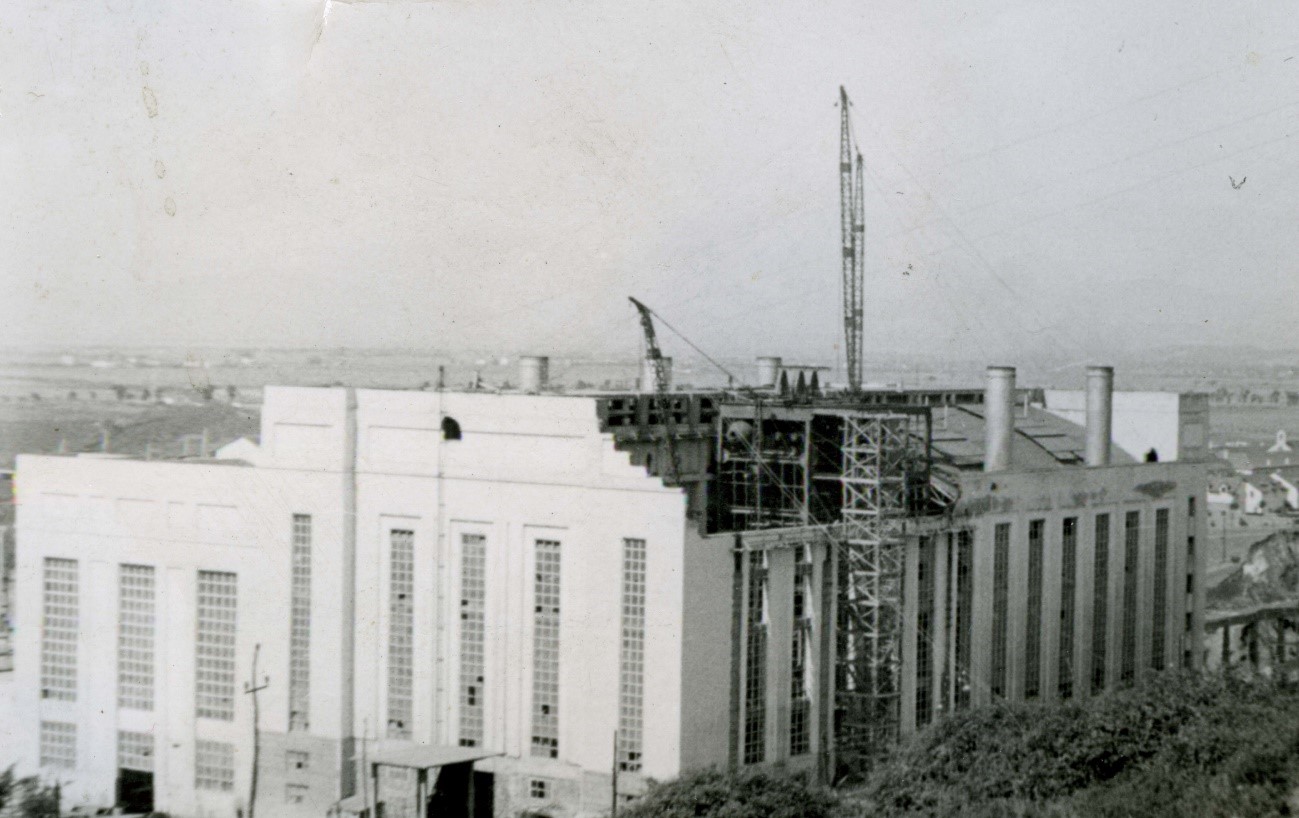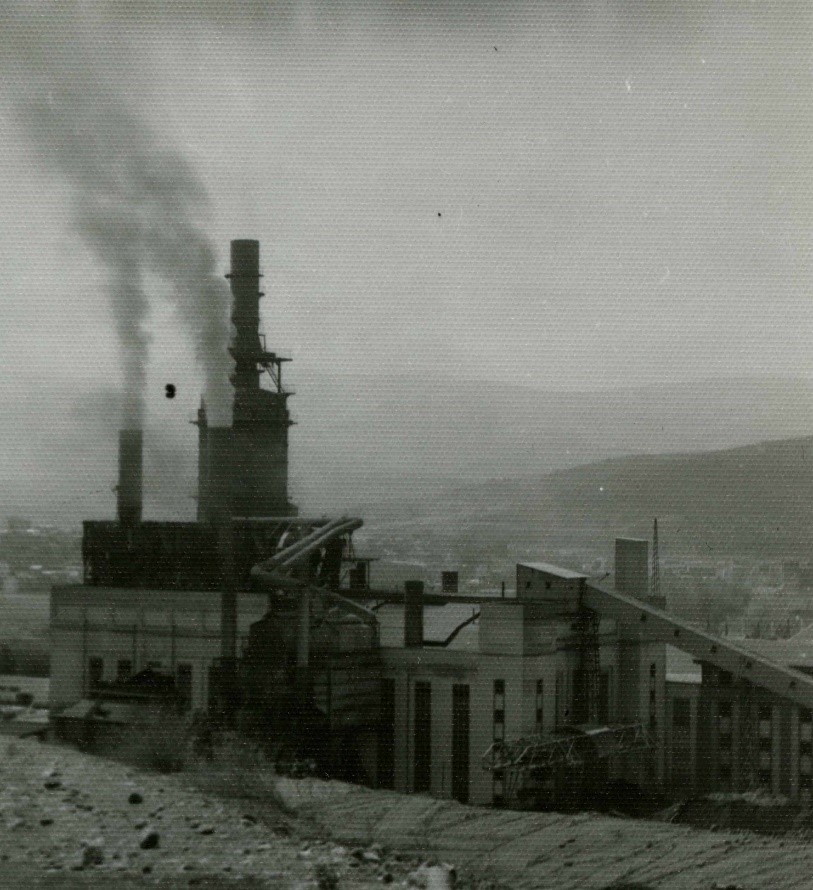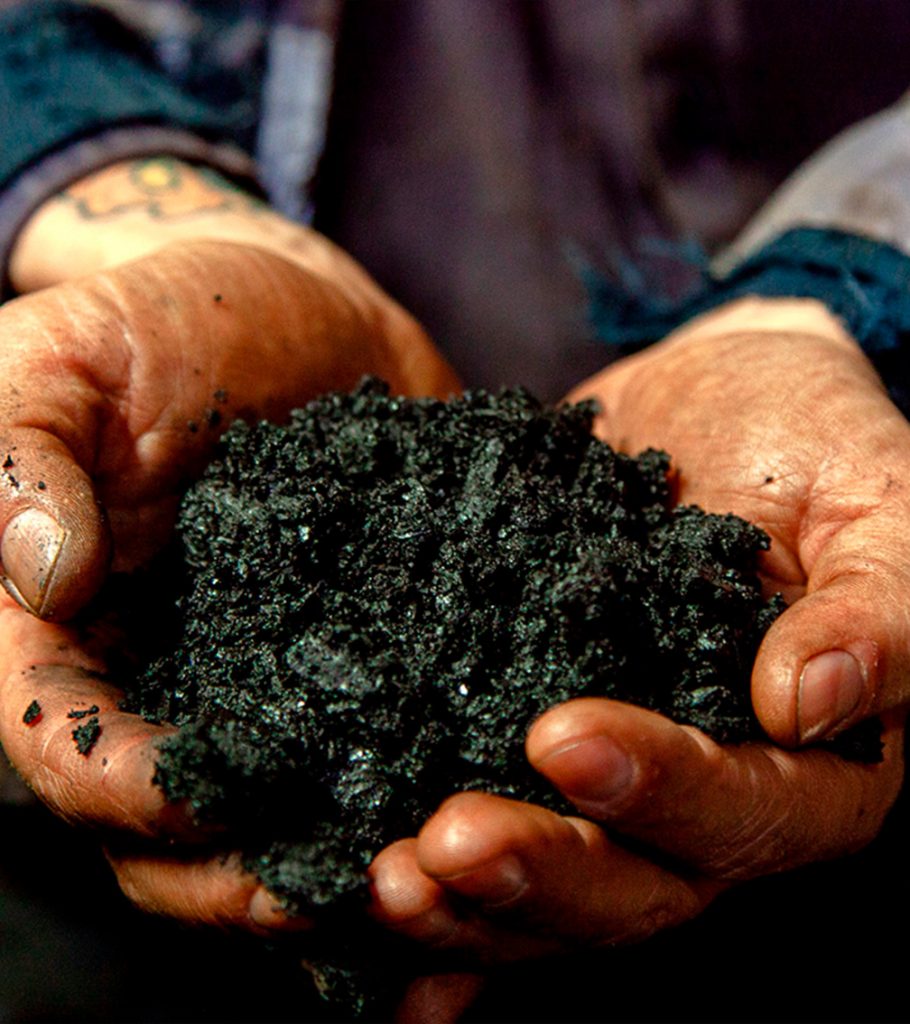Opening hours: Friday from 4 pm to 10 pm, Saturday from 10 am to 10 pm and Sunday from 10 am to 4 pm
History
The Compostilla I thermal power plant is one of the landmarks of Ponferrada's industrial heritage. The plant owes its name to the place where it is located, where there was a Marian hermitage that was an obligatory stop for pilgrims on the Camino de Santiago. This power plant is an example of the industrial architecture of the 40s, a huge building but with simple forms, a great white mass that stands on a hill from which you can see the whole city. A giant that has the charm of its time and that, together with its big sister so close by, the former Minero Siderúrgica de Ponferrada (MSP) power plant and today La Fábrica de Luz. Museo de la Energía, evoke Ponferrada's industrial past.
Compostilla I was the headquarters of an incipient public electricity company, today Endesa, which started up in 1949 with 25,000 kW of power. Its neighbor, the MSP, built 30 years earlier, had an installed capacity of 6,000 kW at that time. Both plants were supplied by coal extracted from the mining basins of Bierzo and Laciana.
Specifically, in Compostilla I began to burn anthracite, a poor coal due to its high ash content, which, however, managed to increase in price and make the exploitation of this abundant material in the region profitable. The thermal power plants formed the epicenter of a network of industrial and economic activity around this mineral that lasted in these regions for a century.
Gallery






Chronology
The Compostilla I thermal power plant exceeded its production forecasts from the very beginning, which is why it has not stopped undergoing changes up to the present day. So much so that, three months after starting its activity, it had already doubled its power with the installation of a second turbo-alternator group. In the mid 1950s, the third and fourth units came into operation, reaching an installed power of 167,000 kW, compared to the 100,000 kW for which it was planned.
The generation of electricity made Ponferrada an authentic strategic point from which a supply network was deployed to all the cardinal points of the country. In October 1949, a 132 kW power transmission line was put into service between Compostilla and Ujo (Asturias), and in February 1959, work was completed on the 220 kW line to the La Mudarra substation in Valladolid, with a length of 163 km of wiring. Iberduero, Hidrola, Renfe and Unión Eléctrica Madrileña were some of the companies in charge of distributing the energy produced in El Bierzo.
1944
ENDESA is born
Empresa Nacional de Electricidad S.A. (ENDESA) is born. It is founded on November 16 in Ponferrada with the aim of producing, transporting and supplying electricity to the Spanish territory.
1945
Operating permit
The Ministry of Public Works granted Endesa the permit to exploit the Fuente del Azufre waterfall at the foot of the dam. This weir on the river Sil, which is located near Compostilla I, was built to divert water to the Lower Bierzo Canal and at the same time was used to cool the thermal power plant.
1946
Work begins on the construction of Compostilla I
1949
Start-up of Compostilla I
On July 28th, Compostilla I starts operating with a single 25,000 kW unit. In October, the second turbo-alternator group starts up, providing the facility with 50,000 kW.
1974
Travel to Compostilla II
The thermal power plant was displaced by the modern facilities of the Compostilla II power plant inaugurated in 1966, which had a greater capacity to meet the high energy demand that the country needed at that time. This year it ceased to produce electricity, but the control building continued as the headquarters of Endesa's offices.
2011
CIUDEN is located in the control building.
The building, which had been ceded by Endesa to the Ponferrada City Council, became the headquarters of the City of Energy Foundation (CIUDEN), which at that time included the space in a museum project. On February 28, the works for the adequacy of the facilities, which suffered a first stoppage in January 2012, began.
2013
Conditioning
Refurbishment work is resuming until 2016.
2022
Reactivation
The project was reactivated with greater momentum and, in April of this year, the urbanization of the Compostilla I area began.













